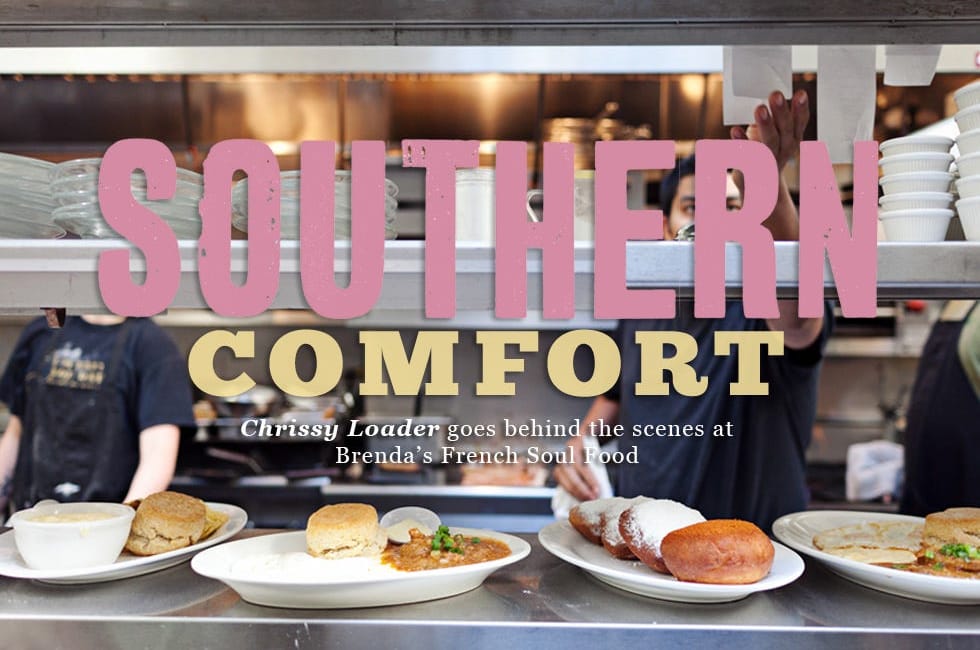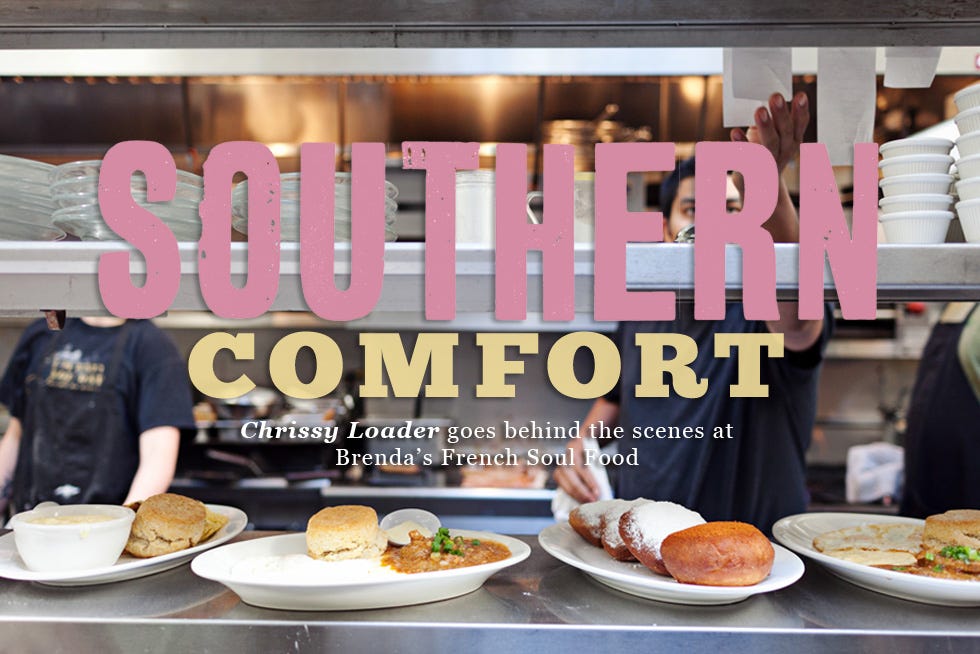
By Chrissy Loader
Sometimes you just want fried chicken (or an oyster po’ boy, or a plate of shrimp and grits). Of course, this entails — the hell with healthy! — a hearty deep frying, extra butter, and a loosening of the belt. But after days (years?) filled with conscientious West Coast eating, sometimes you need to veer off the rails. And head south.
This means Brenda’s French Soul Food on Polk in the Tenderloin. I don’t typically like waiting for brunch, but Brenda’s offerings can persuade even the most impatient of folks, like me, to battle a flurry of hungry diners for a flight of beignets (crawfish, apple, chocolate, and a traditional “plain” version), a bowl of gumbo, and a food-coma-inducing seasonal cobbler.
Over the four years since Brenda’s opened its doors, things have evolved. For one, though the restaurant was initially a weekday breakfast and lunch spot, it’s developed into an epic Saturday and Sunday brunch destination. This year, Brenda’s started dinner service with Creole-style broiled oysters, nightly specials, and beer and wine. It’s also renovated its dining room, which will eventually accommodate nearly twice as many diners as before.
But I’m impatient about all this change, so I checked in with chef/owner Brenda Buenviaje herself to get the latest word on how things are coming, as I attempted to pinpoint the source of the soul in her soul food.
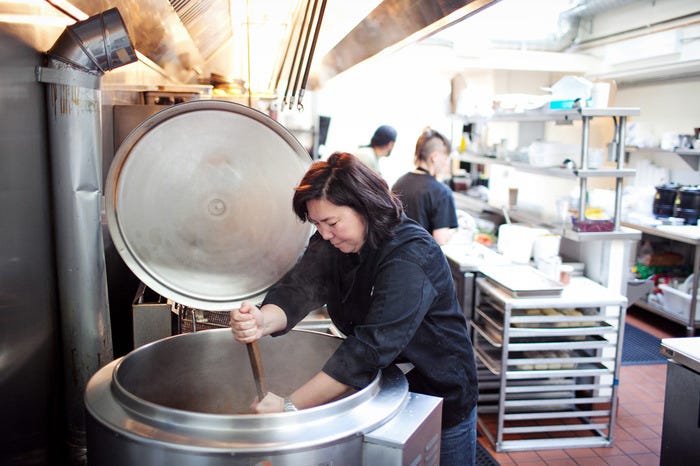

It’s a Monday morning and I find Brenda in her new kitchen. She has dark hair, a mellow smile, and appears to be somewhere in her late 30s or early 40s. Brenda is a native of New Orleans, of Filipino and Creole descent, and lives with her wife and two children nearby in the Tenderloin. Though she studied visual art, she was drawn into cooking after she left school and worked in restaurants in the South, and later in San Francisco.
Brenda began envisioning Brenda’s French Soul Food over 15 years ago when she first moved to San Francisco while she was cooking at restaurants such as Cafe Claude and Zuni. Though there seem to be more southern and, in particular, more Cajun- and Creole-inspired menus around the city these days (I’m thinking about Boxing Room, the pop-up restaurant Easy Creole, and, of course, the Front Porch), four years ago good Louisiana-style cooking was scarce in San Francisco.
Brenda actually considers her menu to be more fusion than traditional Cajun or Creole, more French-influenced comfort food with soul, and her recipes contain plenty of local ingredients. Likewise, Cajun and Creole cuisines actually include French, Spanish, Portuguese, Italian, Greek, Indian, Native American, and African influences that have been adapted to Southern ingredients. Cajun tends toward rustic, provincial cooking — resulting in the creation of gumbo, jambalaya, and crawfish boils. Creole cuisine includes more sophisticated, French-influenced dishes — oysters Rockefeller, crawfish étouffée, Creole bread pudding, Gulf shrimp and grits, turtle soup, and Creole-style rémoulade (a French mayonnaise condiment). And at Brenda’s, there’s also chicory café au lait and beignets reminiscent of Café du Monde in New Orleans.
Brenda’s menu contains Cajun, Creole, and French-inspired dishes, including gumbo, pork rillettes , and the mother of all ham and cheese sandwiches, croque monsieur. But it’s all food for the soul with new interpretations of classics, such as a “light” Sloppy Josephine (made with turkey), a Vegan Josephine (made with tofu), flavored beignets, and a chipotle rémoulade.
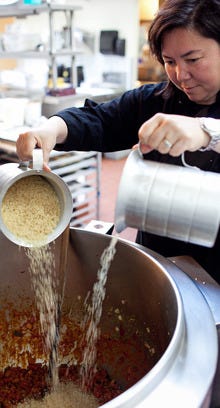
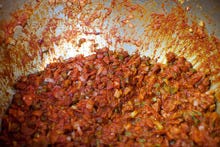


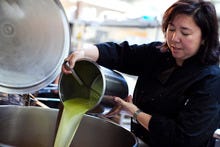

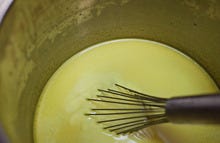

Brenda shows me around the restaurant, clearly delighted with her new kitchen. There’s tons of stainless steel and an impressive 40-pound pot she purchased from the California Culinary Academy previously located across the street (it’s now in Potrero Hill). In the old dining room, the floors are still torn up and the old kitchen is a skeleton of its former self — plans for the future include new tables, skylights, and windows to help create one large dining space.
The expansion has happened in stages, with the restaurant staying open through most of the construction. When Brenda’s neighbor — a dry cleaner — closed, she took over the vacant storefront and began expanding the tiny 28-seat restaurant. Brenda’s plan was to try to hold onto the restaurant’s original charm — the tin ceilings and low-key decor. Though the new dining room has been open since the early part of the year, it’s still in the midst of being decorated, and the entire renovation, including combining the two dining areas, is set for completion in late summer or early fall.
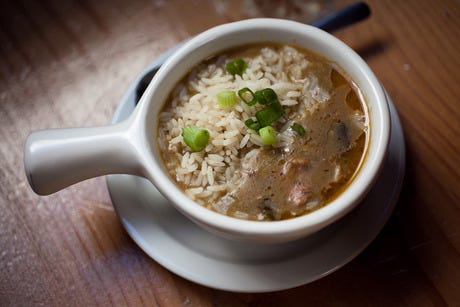
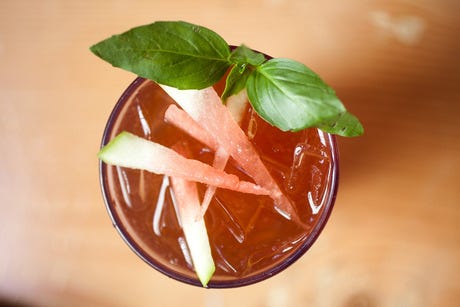


Back near that lovely 40-pound pot, Brenda begins making a batch of her chicken, sausage, and okra gumbo. She starts with the “Holy Trinity” of Louisiana Creole cooking — chopped onions, bell pepper, and celery — and garlic, stirs in some hefty chunks of locally-sourced andouille sausage, and adds a healthy dose of bay leaf, chopped chicken thighs, and chicken broth. I’m particularly impressed by her roux.
Roux is the basis of classic Creole cooking. Typically comprised of flour and some sort of fat and used to thicken broths (or to make the cheese sauce in macaroni and cheese truly creamy), Brenda’s roux is made with lard and stored at room temperature in a huge bright white bucket near the stove. As the broth reduces and the gumbo simmers in the pot, Brenda adds some roux and — last, so it doesn’t turn to mush — sliced okra.
As she cooks, Brenda tells me about a cookbook she’d like to write — it would include her family history and her take on New Orleans, exploring the Italian restaurants she grew up around, and New Orleans’ Little Manila. As she talks, she’s stirring the pot with a huge wooden paddle; it seems she could row herself all the way back to the Big Easy.


The scent of gumbo fills the air and I’m getting hungry. I ask how much longer before it’s done and if I’ll be able to try some before I leave. Brenda shakes her head; no, it won’t be ready. She explains that the flavors need time to meld, and that she usually waits a day before serving a gumbo or a jambalaya. But she’ll give me a sample from the last batch so I can see how it will eventually taste.
As she puts together a little to-go package for me — a pint of gumbo and a huge biscuit — I look through the kitchen’s recipe book. They all appear pretty simple — Southern ingredients, or the age-old biscuit recipe with butter, flour, and salt. Honestly, I can’t figure out what makes Brenda’s food so good. So I ask.
“Patience,” she replies. “It’s about good ingredients, but not everyone’s willing to take the time to do it right.”

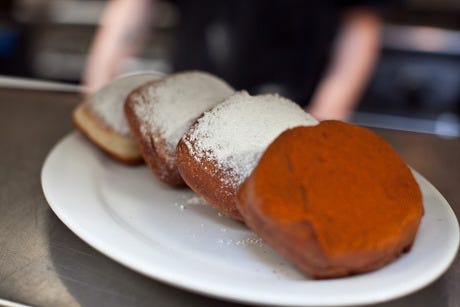
This makes perfect sense to me. As a San Franciscan, I’ve learned to wait — for the rare taxi, for truly great friends, or for that great apartment. I know there’s time involved in waiting for my coffee at Blue Bottle or to get a table at my favorite restaurants. It all takes time. And from the slow process of building and expanding a restaurant to making an exemplary batch of gumbo, it makes perfect sense to take the time for everything to meld together until it’s just right.
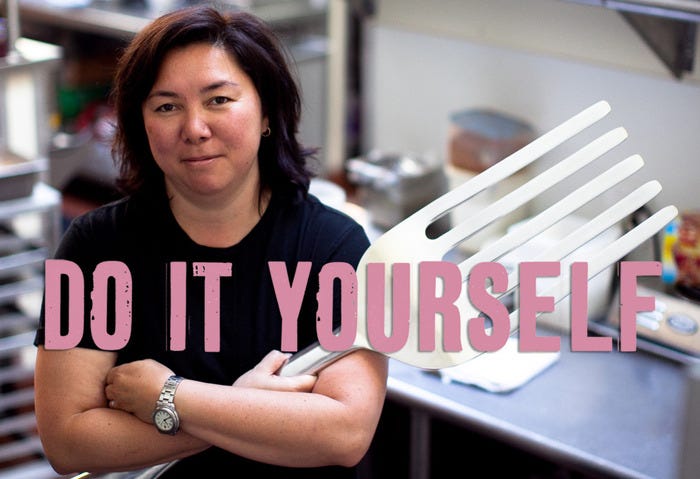
Of course, you can go home and make gumbo, keeping in mind that it tastes best after a day. Or you can let Brenda make dinner for you. Here’s what I suggest you do the next time you’re at Brenda’s:
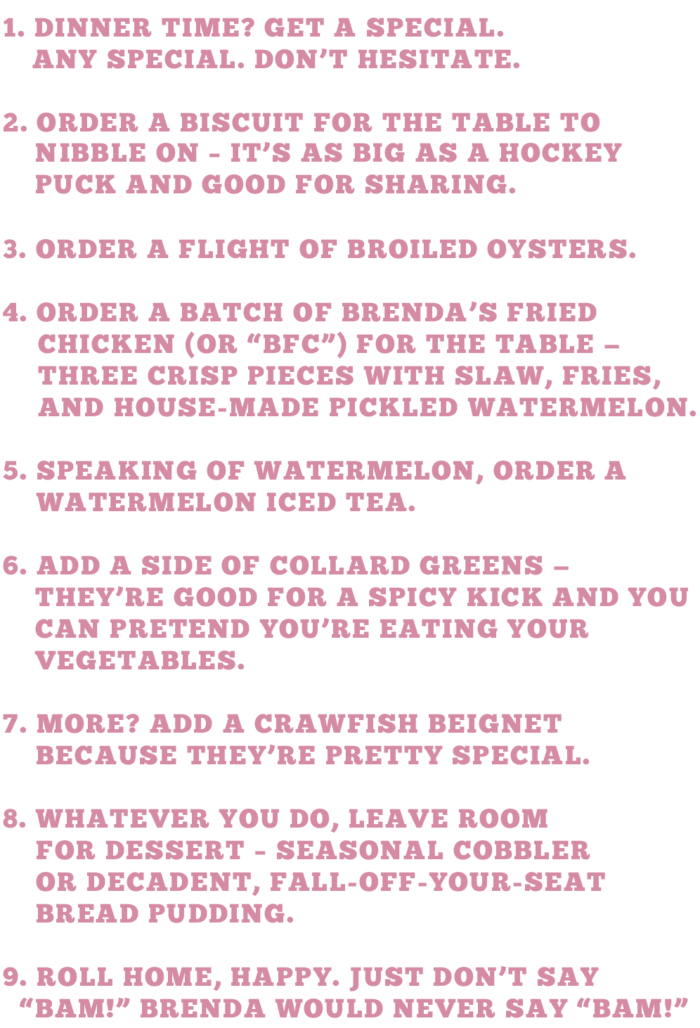
Designed by Sasha Gainor
Photography by Orange Photography



